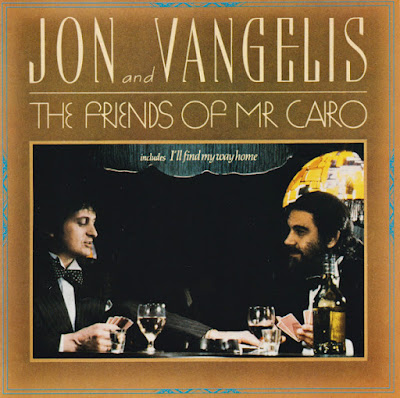Jon & Vangelis Friends Of Mr. Cairo
Get It At Discogs
Jon Anderson and Vangelis released several albums over the years. Their merging of musical styles and ideas has always worked quite well from my point of view. While there was one disc before this, Short Stories, this was the one that really got them attention. It was also the first one that came up on my radar. Vangelis is probably best known for movie soundtrack music and “new age” sounds, but if you really look into his past he was also a progressive rock musician in the band Aphrodite’s Child. In fact, at one point he nearly joined Yes. So, it seems like it must have been destiny for these two men to work together. This album is a great one, with only one song that I am not totally hooked on. I’m not sure that I’d say this is my favorite Jon and Vangelis disc (Private Collection is near and dear to my heart, too) but this one will always be right up there. The blending of new age sounds with progressive rock ones is a great marriage. This still holds up remarkably well, even in a totally different millennium. If you haven’t checked out Jon and Vangelis I can think of no better starting point.








